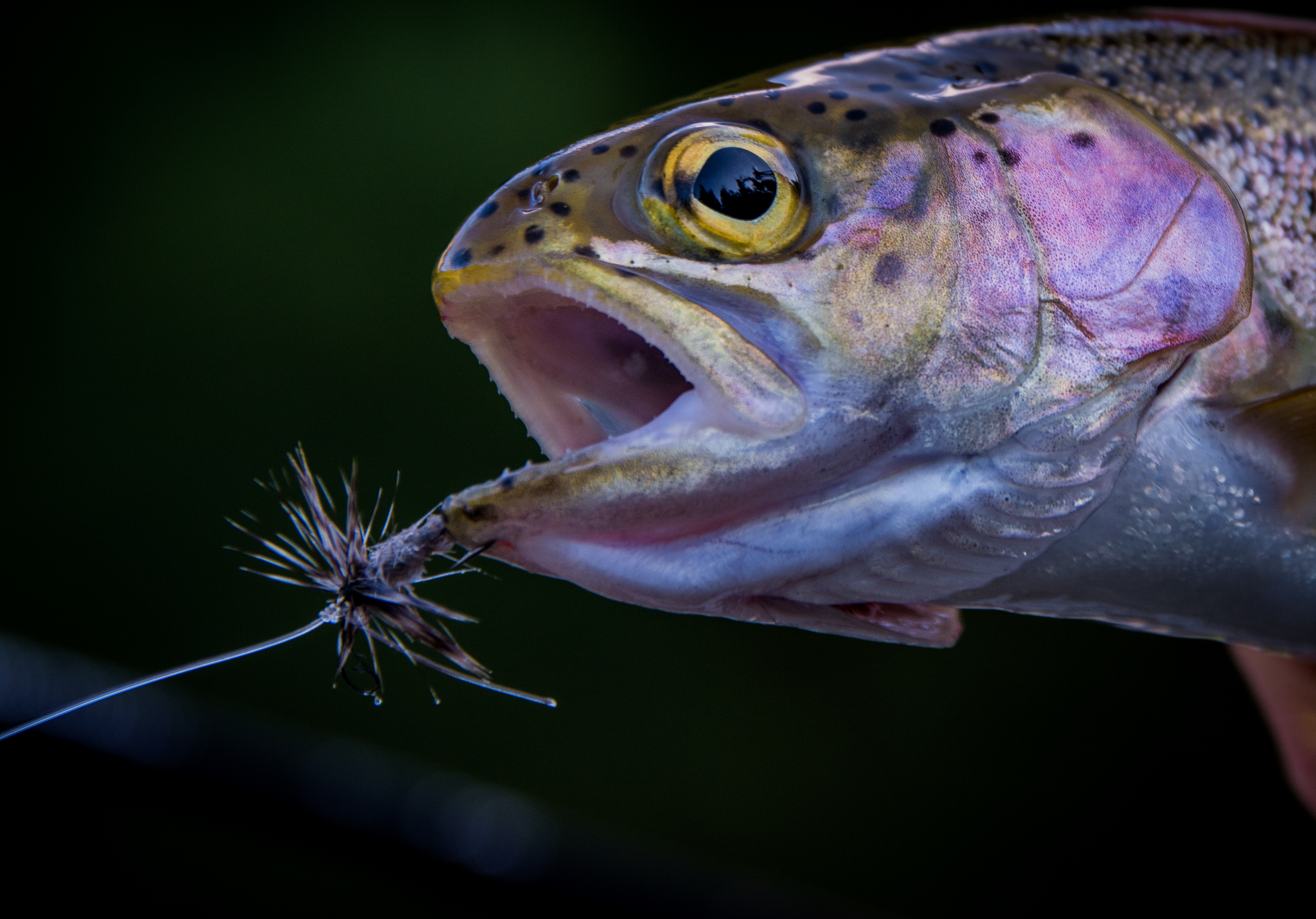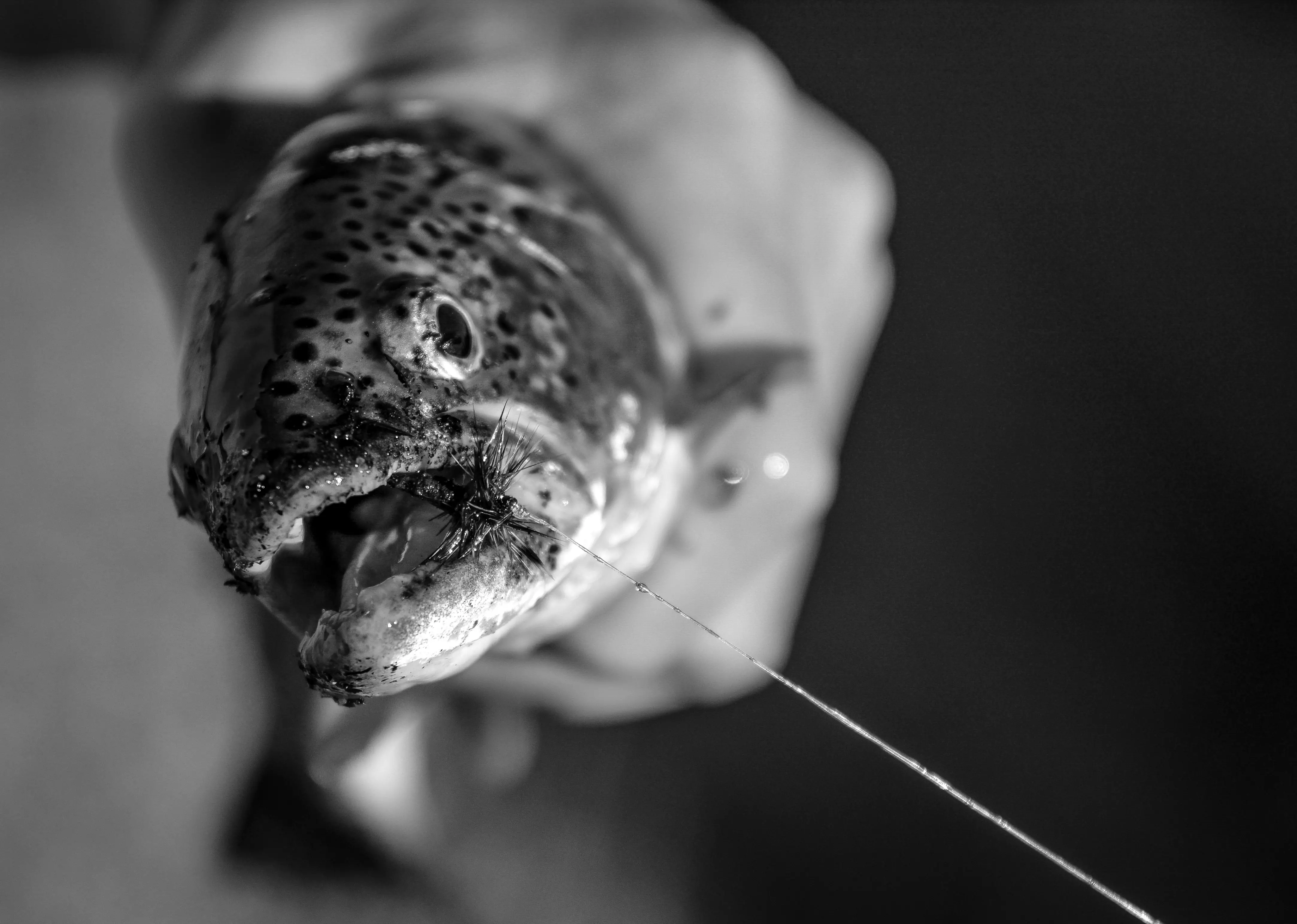Spin Fishing Flies for Trout
by
Jason Brooks, May 09, 2020
It has been glamorized in movies and books, put atop a pedestal and thought to be for “elitist”,
but fly fishing is not for the monarchs and quintessential angler. Though those that tout split
bamboo rods, hand tied caddis, and wide brimmed hats with matching vest don’t want to admit
it but fly fishing is simple and doesn’t have to be done with a fly rod at all. No need for a “five
count rhythm”, as Normal Mclean turns over in his grave at this sentence, as you can use
standard gear to “fly fish”. The trout’s main staple is not PowerBait, we know this, but dough
baits catch fish, however there is something to be said about fooling a trout to bite a fly tied to
look like the natural food source. It’s a game of wits, and intellect that makes “matching the
hatch” so rewarding.
Starting with standard gear, so you know that you can use flies to catch trout with a spin outfit,
it is best to use a long and limber (light action) rod. This is because you will downsize your
leader, often called a “tippet” by those that fling a split bamboo or graphite five-weight. The
longer rod not only allows you to play the fish better but it also allows you to cast lighter
weights. At the end of the mainline is a “bubble bobber” or “torpedo float”. This clear plastic,
sometimes red or orange in color, tear dropped shaped bobber is the key to fly fishing with a
spinning outfit. It is how I first learned to use flies before, and yes I admit it, picking up my
grandfather’s Fenwick fly rod and learning to rhythmically shoot a fly out over the water.
The leader should be light, such as four-pound test monofilament or even fluorocarbon. This is
because you need it to disappear to give the impression that the fly is floating along all alone.
Again, the long rod helps out as you can increase the length of the leader from four to six feet
depending on how long of a rod you are using.
Tied on the end of the leader is the fly. Now, this is the “tricky” part. Some trout don’t care
what kind of bug it is and will eat anything you throw out there, but for native fish, carryovers
and sometimes to get a bite going you need to know a little entomology (bug identification).
The best way to do this is to look around and see what bugs are currently annoying you. The
mosquito is always a good bet, along with Adams, Grasshoppers, Madam X, Duns and March
Browns. These are dry flies, meaning they float and fish will rise to the surface and grab them.
Cast out and slowly retrieve the bubble float. You should notice the fly trailing behind, creating
a small wake. Watch it closely. If you notice a small rifle then that means a fish came up to grab
the fly and fell just short. This is a good indication that you have the right fly on the end of the
line. Sometimes you need to adjust the speed you reel in, a little fast can entice a bite as the fly
looks as if it is skimming along the top of the lake. If you notice fish rising around the fly but not
grabbing it then slow down, even pause a bit, then a quick crank on the reel and stop again.
This mimics a fly thrashing on the surface, as if it either just emerged or landed on the lake and
is trying to take off with wet wings. Trout know they need to grab this fly before it’s gone.
The size of the fly can make a different but what is more important is the gape in the hooks gap.
That means how big the hook is from point to shank and if the fish can get it in its mouth. If you
miss a lot of strikes this might be more of the fish can’t get its mouth over the point of the hook
than you being slow on the hookset. Downsize your fly one or two sizes usually corrects this
problem.
Sometimes the fish aren’t feeding on the surface, actually, most of the time they are not
feeding on the surface. Yes, you can “wet fly fish” using a spinning outfit. This is done by trolling
slowly and if you have a small boat with an electric trolling motor or a float tube or pontoon
then this is perfect for this type of fishing. A small split shot placed a few feet before the fly
takes it down to the fish. Aquatic bugs don’t swim very fast so let the line out as you troll as
slow as possible. Once you get the fly out 30 feet or more, depending on the depth you are
fishing. This is why a pontoon or a float tube is perfect for this type of fishing. A kick to move
you along, or a short stroke of the oars. The intermittent pause mimics the bug swimming.
Common wet flies are gold bead hares ear nymphs, pheasant tail nymphs, carey specials and
wooly buggers. Mack’s lure makes a Smile Blade Fly this is perfect for trout fishing. It combines
the wooly bugger with a small Mylar Smile Blade that attracts the fish. The hook on the Smile
Blade Fly is fairly large and one way to increase more bites is to use a trailer fly. Simply tie a
leader to the bend of the hook on the Smile Blade Fly and trail another streamer or wet fly such
as a standard carey special.
When chironomids are emerging from the mud trout feed feverishly on them. They are a
“boring” fly to fish but they are very effective. The chironomid is an emerger and doesn’t really
swim but just floats along and wiggles to get to the surface film of the water. Once there the
sun warms the bug and it breaks free of its shell and emerges as an adult and flies away. But
when the bug is in the chironomid form trout simply cruise along with their mouths open like a
whale collecting krill, and inhale the bugs. The bite is very subtle and those that use traditional
gear use a small strike indicator to let them know when a trout has inhaled one of their flies.
Spin casting outfits can fish chironomids too. Look around the tackle store for the very small
cork floats. You can also use a float that is made for Crappie and Panfish fishing. A few feet
below the cork float you can use a small split shot but it might interfere with the action of the
chironomid so don’t put it too close to the fly. A light leader is best and you can use up to three
chironomids tied in tandem or off the end of a blood knot tag end in Washington (check your
local regulations). Keep them at least a foot apart. The wave action with the cork float helps
mimic the chironomid wiggling. If you balance the float to be mostly underwater by using split
shot then any subtle movement of the float going down tells you a trout has bit the chironomid
and it’s time to set the hook.
Once you start using flies with a spinning rod you will find that you are catching bigger trout
and having a lot of fun. It is also a great way to fish high alpine lakes, streams, and rivers. One
big advantage over the traditional fly fishing is that spinning outfits don’t need room for a backcast. This means you can stand on the brushy shoreline and cast easily without worry of hooking the tree behind you. You can also cast very accurately with little practice. Learning which flies to use, how to use them and the ability to catch and release fish makes for a fun day out fishing. Eventually you might get the urge to pick up a fly rod and give it a try. Just don’tstand too high on that pedestal when the time comes because anglers using a spinning outfit
can do the same thing.
Jason Brooks hails from North-Central Washington. The son of a fishing guide, Jason is an avid hunter, angler, outdoor photographer and published writer. He resides in Puyallup with his wife and two boys.
Comments
Why is this comment inappropriate?
Delete this comment? Provide reason.





